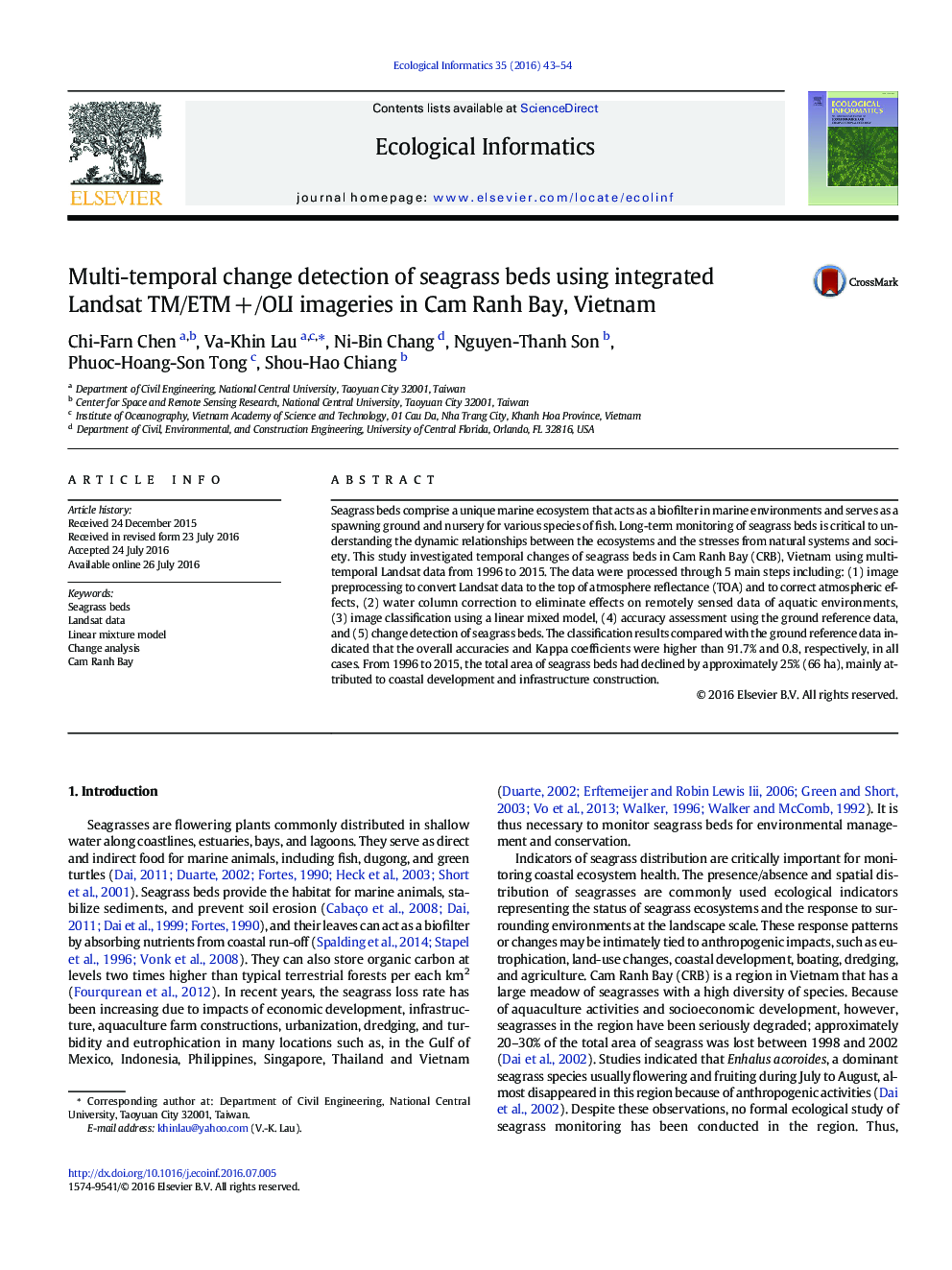| Article ID | Journal | Published Year | Pages | File Type |
|---|---|---|---|---|
| 4374750 | Ecological Informatics | 2016 | 12 Pages |
•This study assessed changes of seagrass beds in Cam Ranh Bay using Landsat data.•The data were processed for 5 periods from 1996 to 2015 using linear mixture model.•Classification maps compared with the reference data revealed satisfactory results.•From 1996 to 2015, 66 ha of seagrass beds had declined due to coastal development.
Seagrass beds comprise a unique marine ecosystem that acts as a biofilter in marine environments and serves as a spawning ground and nursery for various species of fish. Long-term monitoring of seagrass beds is critical to understanding the dynamic relationships between the ecosystems and the stresses from natural systems and society. This study investigated temporal changes of seagrass beds in Cam Ranh Bay (CRB), Vietnam using multi-temporal Landsat data from 1996 to 2015. The data were processed through 5 main steps including: (1) image preprocessing to convert Landsat data to the top of atmosphere reflectance (TOA) and to correct atmospheric effects, (2) water column correction to eliminate effects on remotely sensed data of aquatic environments, (3) image classification using a linear mixed model, (4) accuracy assessment using the ground reference data, and (5) change detection of seagrass beds. The classification results compared with the ground reference data indicated that the overall accuracies and Kappa coefficients were higher than 91.7% and 0.8, respectively, in all cases. From 1996 to 2015, the total area of seagrass beds had declined by approximately 25% (66 ha), mainly attributed to coastal development and infrastructure construction.
